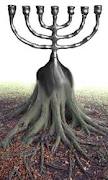 A New York rabbinical court made a precedent-setting halakhic decision last summer that could eventually pave the way for legions of “lost” Jews to return to Judaism.
A New York rabbinical court made a precedent-setting halakhic decision last summer that could eventually pave the way for legions of “lost” Jews to return to Judaism.
The case revolves around Wendy Armstrong, a real estate professional in St. Louis, Mo., who was raised in a Christian home and attended a Methodist church as a child. Armstrong found immense significance in her discovery that her fourth great grandmother in her maternal line had been Jewish, and she planned to convert to Judaism.
“Once I found out that my family was Jewish, it was like a light bulb went on,” said the single 35-year-old, who began taking classes, lighting Shabbos candles and attending synagogue. “I just got it. It was like, ‘Ah-hah!’ It was an eye-opening experience.”
Armstrong’s third great-grandmother had been one of three sisters left at a Christian orphanage in St. Louis in 1880 by their widowed father, Theodore Menn, an indigent saloonkeeper who had left a handwritten note in German that was still in the files of the superceding institution. He began the note with a common Hebrew shortform — “B’H” (Blessed is God) — and went on to beg God to forgive him and take care of his children.
As Armstrong discovered, Menn and his wife, Anna Heinrich, had been married by an Orthodox rabbi in Quincy, Illinois, in 1865. Numerous other documents corroborated the family’s Jewish origins to a standard of evidence readily acceptable to genealogists.
Armstrong presented a thorough 25-page genealogical report to a three-person rabbinical panel, which accepted the uncontestable paper trail as proof of her Jewish ancestry and judged an official conversion unnecessary because she was already Jewish. “They basically said, ‘Congratulations, you’re a Jew, welcome home,'” she said. “I don’t have to go to a mikveh.”
For Missouri businessman Craig Shapiro, who assisted Armstrong with the genealogical report to the beit din, the ruling cleared the way for the establishment of Shlach Amee V’yavdonne, a non-profit organization specifically designed to help “lost Jews” return to Judaism.
The rabbinical decision is a precedent because it recognizes for the first time the validity of using records of both Jewish and non-Jewish provenance to prove Jewish ancestry, according to Shapiro. The same precedent, he asserted, might also be applied to recover to Judaism the descendants of Jews who were converted under force or undue coercion in centuries past, for example during the Holocaust, a pogrom, the Spanish Inquisition or even the Crusades.
The phrase Shlach Amee V’yavdonne bears particular resonance at Passover because it is taken from the Book of Exodus and translates as, “Let My people go, that they may serve Me.”
Shlach Amee is planning an international advertising campaign in searchof people with suspected Jewish roots. The organization will hire genealogists around the world to help research the ancestries of respondents who show a genuine and sustained interest in Judaism, Shapiro said.
According to Shlach Amee advisor Rabbi Chaim Mentz of Los Angeles, the organization has the potential to spark a major ingathering of Jewish exiles over the next generation. “Twenty or 30 years from now, we could be bringing home hundreds of thousands of Jews,” he said.
With a sort of messianic fervour Shapiro expressed the goal of bringing six million Jews back to Judaism over the next 18 years, but readily admitted those numbers were more symbolic than realistic. “Even if we bring one Jew back, it’ll be worth it,” he said. “Even one Jew will make a difference.” ♦
© 2005





